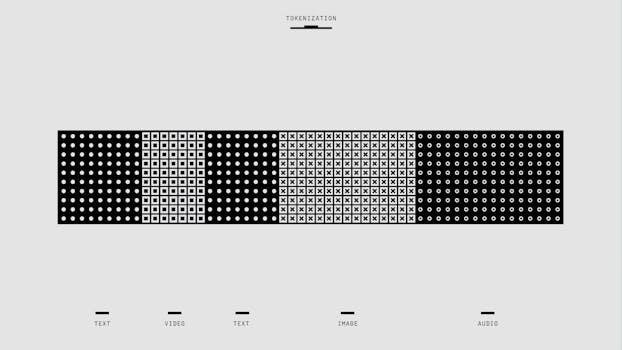Static Cardiology Practice Strips PDF: A Comprehensive Guide
Static cardiology practice strips, frequently accessible in PDF format, represent a crucial resource. They aid in mastering ECG interpretation. This comprehensive guide explores benefits, formats, and resources; It helps you effectively utilize static strips.
Static cardiology practice strips serve as invaluable tools for healthcare professionals and students. They are aiming to enhance their electrocardiogram (ECG) interpretation skills. Unlike dynamic, real-time ECG monitoring, static strips present pre-recorded tracings as still images. They offer a focused and structured approach to learning. These strips, often found in PDF format, provide a convenient and cost-effective way to practice identifying various cardiac rhythms and abnormalities.
The use of static cardiology practice strips allows learners to analyze ECG patterns at their own pace. This allows for careful examination of key features. It includes the P waves, QRS complexes, and T waves. These strips are particularly useful for preparing for certification exams. Examples are NREMT and ACLS, and improving diagnostic confidence in clinical settings. By working with a diverse range of static ECGs, individuals can develop a strong foundation in cardiology and confidently assess cardiac conditions.
Definition and Purpose of Static Cardiology Strips
Static cardiology strips are pre-recorded electrocardiogram (ECG) tracings. They are presented as still images. These strips encompass a variety of normal and abnormal cardiac rhythms. They are designed for educational and training purposes. The primary purpose of static cardiology strips is to provide a readily accessible and cost-effective method for healthcare professionals, students, and paramedics. They can hone their ECG interpretation skills.
Unlike dynamic ECG monitoring, which displays real-time heart activity, static strips offer a snapshot of a specific cardiac event. It allows learners to focus on identifying key features of the tracing without the added complexity of continuous changes. By analyzing these static representations, users can practice recognizing various arrhythmias, conduction blocks, and other cardiac abnormalities. The ultimate goal is to improve diagnostic accuracy and enhance the ability to make informed clinical decisions based on ECG findings. Static strips are invaluable resources for both initial learning and ongoing skill maintenance in cardiology.
Benefits of Using Static Cardiology Practice Strips
Static cardiology practice strips offer numerous benefits for individuals seeking to improve their ECG interpretation skills. One significant advantage is structured learning. Static strips provide a focused approach to understanding ECG tracings. It enables learners to systematically analyze different rhythms and abnormalities. This structured practice enhances comprehension and retention of key diagnostic criteria.
Furthermore, static strips are cost-effective. They offer a budget-friendly alternative to expensive simulation equipment or clinical attachments. They allow users to practice independently, at their own pace, and without the constraints of time or location. This flexibility is particularly valuable for busy healthcare professionals or students. They can integrate ECG practice into their daily routines. Static strips also promote skill enhancement. They provide opportunities to repeatedly analyze diverse ECG patterns. This repetition builds confidence and improves diagnostic accuracy. Ultimately, static cardiology practice strips are invaluable tools for mastering ECG interpretation.
Structured Learning and Skill Enhancement
Static cardiology practice strips are invaluable tools for structured learning. They provide a systematic approach to ECG interpretation. Learners can focus on specific rhythms and abnormalities. This facilitates a deeper understanding of cardiac electrophysiology. The structured format guides users through key diagnostic features. It encourages critical thinking and pattern recognition. By repeatedly analyzing static strips, individuals reinforce their knowledge. This is an effective way to develop a strong foundation in ECG analysis.
Skill enhancement is another significant benefit. Static strips offer ample opportunities for practice and refinement. Users can hone their ability to accurately identify arrhythmias. They can improve their speed and confidence in making diagnoses. The controlled environment of static strips allows for focused learning. It minimizes distractions and maximizes skill development. Regular practice with static cardiology strips leads to improved clinical competence. It enhances patient care outcomes by enabling timely and accurate diagnoses.
Cost-Effective ECG Interpretation Practice
Static cardiology practice strips offer a highly cost-effective solution for ECG interpretation practice. Compared to expensive live monitoring equipment, static strips are significantly more affordable. Many resources provide free or low-cost PDF versions of practice strips. This makes them accessible to students, healthcare professionals, and anyone seeking to improve their ECG skills. The cost-effectiveness of static strips allows for widespread use. It enables individuals to engage in regular practice without incurring substantial expenses.
Furthermore, the availability of digital formats reduces the need for physical materials. This eliminates printing costs and promotes sustainability. The convenience of accessing static strips online further enhances their cost-effectiveness. Users can practice anytime, anywhere, without the limitations of traditional learning methods. By leveraging static cardiology practice strips, individuals can achieve significant skill development. They can improve their diagnostic abilities without exceeding their budgetary constraints. This makes them an ideal choice for affordable and effective ECG training.
Formats of Static Cardiology Practice Strips: PDF and Beyond
Static cardiology practice strips are primarily available in PDF format. This is a widely accessible and versatile file type. PDFs ensure consistent formatting across different devices, making them ideal for printing or viewing on screens. However, the availability of static strips extends beyond just PDFs. Other formats, such as ePub and MOBI, are also emerging to cater to diverse user preferences.
ePub format is optimized for e-readers. It offers a reflowable text experience that adapts to various screen sizes. MOBI, another popular e-book format, is primarily used on Kindle devices. The availability of these alternative formats provides users with greater flexibility. They can choose the format that best suits their reading habits and devices. Regardless of the format, static cardiology practice strips remain a valuable tool. They effectively enhance ECG interpretation skills and improve diagnostic accuracy. The increasing variety of formats reflects the growing demand for accessible and convenient learning resources.
PDF as a Common Format
The PDF, or Portable Document Format, has become a ubiquitous standard. It’s the most common format for distributing static cardiology practice strips. Several factors contribute to the popularity of PDFs in this context. Firstly, PDFs maintain the original formatting and layout of the ECG tracings. This ensures that the visual information is presented accurately and consistently.
Secondly, PDFs are compatible with virtually all devices and operating systems. This widespread accessibility makes them convenient for learners. They can access the strips on computers, tablets, and smartphones. Furthermore, PDFs can be easily printed, allowing for offline practice and review. Many free PDF readers and editors are available. This makes it a cost-effective choice for both educators and students. The ease of creation, distribution, and use solidifies the PDF’s position as the premier format. It’s ideal for static cardiology practice strips, facilitating effective ECG interpretation training.
Other Available Formats (ePub, MOBI)
While PDF reigns as the dominant format for static cardiology practice strips, alternative formats like ePub and MOBI offer unique advantages, catering to specific user preferences and device compatibility. ePub, or electronic publication, is a popular format optimized for e-readers and tablets. It allows text to reflow dynamically based on screen size, enhancing readability on smaller devices. MOBI, primarily associated with Amazon Kindle devices, similarly provides a reflowable text experience.
These formats can be particularly beneficial for learners who prefer studying on e-readers, as they offer adjustable font sizes, margins, and brightness settings for comfortable reading. However, ePub and MOBI formats may not always accurately preserve the precise visual representation of ECG tracings. This is a critical aspect for accurate interpretation. Therefore, while ePub and MOBI offer enhanced readability, PDF remains the preferred format. It maintains fidelity and accuracy of the cardiology practice strips, crucial for effective learning.
Utilizing Static Cardiology Practice Strips for Exam Preparation
Static cardiology practice strips are indispensable tools for effective exam preparation. This is especially true for certifications like NREMT and ACLS. These strips provide a simulated environment mirroring the challenges encountered in real-world clinical scenarios. By consistently practicing with static strips, candidates can hone their diagnostic skills, improve rhythm recognition speed, and enhance their understanding of treatment protocols. The structured format of static strips allows for focused learning.
Candidates can systematically analyze each strip, identifying key features such as heart rate, rhythm, and intervals. This analytical approach builds a solid foundation for accurate interpretation. Furthermore, static strips offer a cost-effective alternative to expensive simulation equipment or live monitoring sessions. By utilizing a diverse collection of static strips, candidates can expose themselves to a wide range of cardiac arrhythmias and ECG abnormalities, boosting their confidence and preparedness for high-stakes examinations. Integrating static strips into a comprehensive study plan is crucial. It can lead to improved performance and successful certification outcomes.
Preparing for NREMT and ACLS Exams
Static cardiology practice strips are invaluable when preparing for the NREMT and ACLS exams. These exams require a strong understanding of ECG interpretation and treatment protocols. Static strips provide a realistic and convenient way to practice identifying various cardiac rhythms and abnormalities. By regularly reviewing and analyzing these strips, candidates can sharpen their diagnostic skills and improve their ability to quickly recognize life-threatening arrhythmias. This focused practice is crucial for success on the exams, where time is of the essence.
The use of static strips allows for self-assessment and targeted study. Candidates can identify their weak areas and focus their efforts on mastering those specific rhythms or conditions. Many resources offer static strips tailored specifically to the NREMT and ACLS exam content. Incorporating these resources into a study plan can greatly enhance a candidate’s preparedness. Furthermore, practicing with static strips helps build confidence in one’s ability to accurately interpret ECGs. This is essential for performing effectively under pressure during the exams and in real-world emergency situations.
Improving Diagnostic Skills and Confidence
Static cardiology practice strips are instrumental in improving diagnostic skills and bolstering confidence in ECG interpretation. Regular engagement with these strips allows healthcare professionals and students to hone their ability to accurately identify various cardiac rhythms and abnormalities. The practice provided by static strips helps to solidify knowledge and refine the pattern recognition skills necessary for effective diagnosis. As individuals work through a variety of strips, they become more adept at differentiating subtle variations and recognizing critical indicators of different cardiac conditions.
Moreover, the process of accurately diagnosing rhythms from static strips builds confidence in one’s abilities. This confidence is essential in high-pressure clinical settings, where quick and accurate diagnoses are paramount. The ability to confidently interpret ECGs translates to improved patient care and better outcomes. With each correctly identified rhythm, learners reinforce their understanding and develop a stronger sense of competence. Static cardiology practice strips, therefore, serve as a valuable tool for continuous learning and professional development. They foster both skill enhancement and the self-assurance necessary for effective clinical practice.
Resources for Obtaining Static Cardiology Practice Strips
Numerous resources exist for obtaining static cardiology practice strips, catering to various needs and budgets. These resources range from free online databases to comprehensive subscription services, ensuring accessibility for all learners. Online repositories and medical education websites often offer downloadable PDF files containing a wide array of ECG tracings. These free options provide a cost-effective way to begin practicing and improving ECG interpretation skills.
For more structured and in-depth learning, consider exploring subscription-based platforms and educational institutions. These resources typically offer curated collections of static strips, accompanied by detailed explanations and interactive quizzes. Additionally, medical textbooks and study guides frequently include practice ECGs as part of their content. Libraries and university resources can also provide access to these materials. By exploring these diverse resources, students and professionals can find the most suitable static cardiology practice strips to enhance their learning experience and diagnostic abilities, ultimately leading to improved patient care.
Free and Budget-Friendly Options
For individuals seeking cost-effective methods to enhance their ECG interpretation skills, numerous free and budget-friendly options for obtaining static cardiology practice strips are available. Many websites dedicated to medical education offer downloadable PDF files containing a variety of ECG tracings, encompassing both normal and abnormal rhythms. These resources often provide a valuable starting point for beginners and those seeking supplementary practice materials.
Additionally, consider exploring open-access medical journals and online forums, where users frequently share practice strips and discuss ECG interpretation techniques. Libraries and educational institutions may also offer access to textbooks and study guides that include practice ECGs. Furthermore, creating your own practice strips by recording ECGs from willing participants can be a valuable and free learning experience. By leveraging these readily available and affordable resources, individuals can effectively improve their ECG interpretation skills without incurring significant financial burden, making cardiology practice accessible to all.
Flash Cards and Practice Scenarios
Flash cards and practice scenarios represent invaluable tools in the arsenal of anyone seeking to master ECG interpretation using static cardiology practice strips. Flash cards, typically featuring an ECG tracing on one side and the corresponding diagnosis on the other, offer a quick and effective method for memorizing key ECG patterns and associated arrhythmias. These cards can be easily carried and utilized for on-the-go practice, allowing for frequent reinforcement of learned concepts.
Furthermore, practice scenarios, which present ECG strips alongside a brief patient history or clinical context, simulate real-world clinical situations, challenging users to integrate their ECG interpretation skills with clinical decision-making. These scenarios encourage critical thinking and problem-solving, fostering a deeper understanding of the relationship between ECG findings and patient presentation. By incorporating both flash cards and practice scenarios into their study routine, individuals can significantly enhance their ability to accurately diagnose and manage cardiac conditions based on ECG findings.














